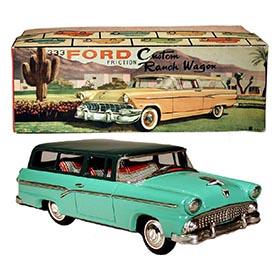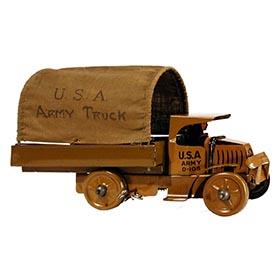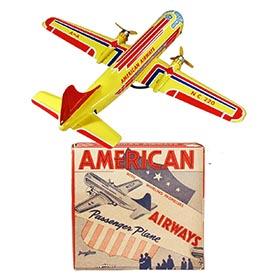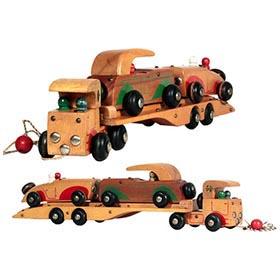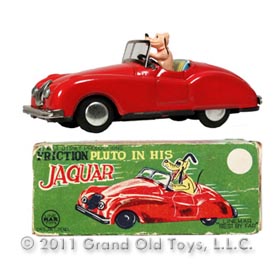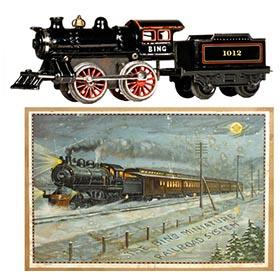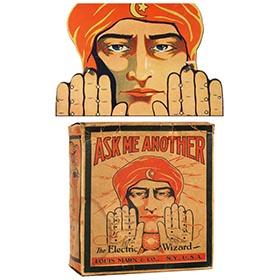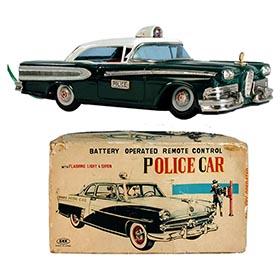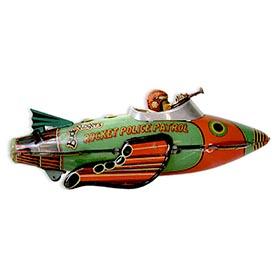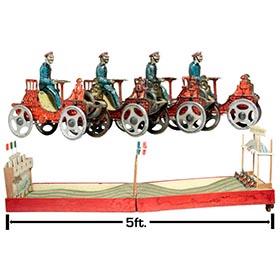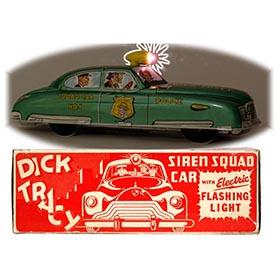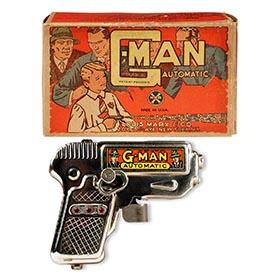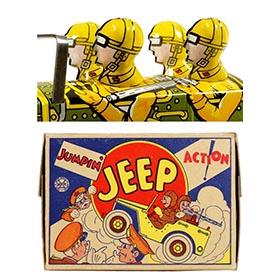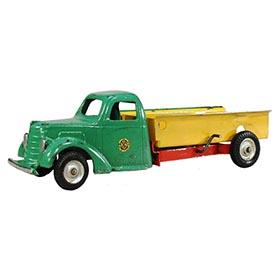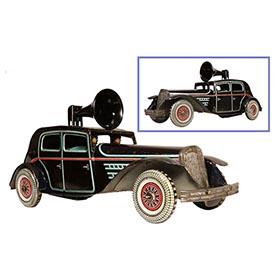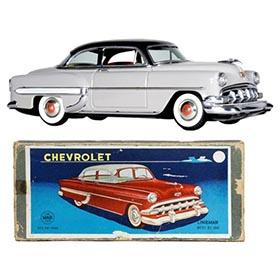1928 Marx, No. 700 Dare Devil Flyer in Original Box

"Tower flyer" toys, two air vehicles suspended from a balanced beam held aloft by a centrally located tower, were manufactured in the U.S., Germany, and Japan from the mid 1920's through the late 1940's. Perhaps the most distinctly unique of these toys was the tin litho Marx No.700 Dare Devil Flyer. Consisting of five complex components it's also one of the most difficult tower toys to find complete and in working condition. Here is a complete Dare Devil Flyer toy with its original box plus its original instruction sheet. It's in magnificent excellent+ to near mint condition and works beautifully and is the first complete example I've seen. The toy consists of: 1) a tomato and green colored high wing monoplane, 2) a gray and maroon zeppelin, 3) a 4-story three dimensional city skyscraper, 4) a threaded balance beam, and 5) a set screw weight. The toy is powered using a clockwork motor set into the monoplane. Most tower toys are mechanical. The motor has two functions. It not only turns the propeller, but also engages a separate mechanism located on the right side of the fuselage. This causes the plane to revolve around the skyscraper while simultaneously somersaulting over the beam through mid-air. The balance beam is angled and circularly threaded on one end to accommodate the somersaulting fuselage axle. I'm not aware of any other toy that has this capability. Tower toys typically have one vehicle which is heavier than the other. They revolve lopsided with one end higher than the other. Of course, this means that the heavier end will always touch the ground. The Dare Devil Flyer is unique in that it's a balanced toy designed to revolve with both vehicles suspended in the air. The monoplane is slightly heavier than the zeppelin, however the weight becomes evenly distributed with the aid of a weighted screw set into the balance beam. Located on the arm which holds the zeppelin, the screw can be set into one of seven holes. The beam will shift up and down faster or slower, or remain horizontal depending on which hole the weight is screwed into. This also varies the rotation speed of the beam and the number of somersaults that the monoplane completes. Although the toy is cited by Pinsky, Greenberg's Guide to Marx Toys Volume II, there is no reference for its ability to vary spin speed, balance, and somersaulting. It was probably not an oversight. Pinsky didn't show the set screw weight, or original instructions . Without them these functions become totally unknown. In fact I know of no other reference including the large toy auction houses which points out this unique ability. If the set screw is omitted the beam will always be lopsided with the monoplane touching the ground. The wing facing the skyscraper will always hit against the side of the building and therefore not work properly. Using the set screw the toy will stay balanced even when its not in use. The monoplane has a lever located on the left side of the fuselage to stop and start the motor. Unlike most tower toy controllers which bind internal gears, this mechanism uses a simples wire loop which protrudes through the engine manifold to physically stop the propeller from turning (see photo's). Most likely the difficulty and cost of manufacturing such a complex toy with five different critical parts resulted in its quick demise. It appears only in the 1928 Montgomery Ward Fall/Winter catalog where it sold for 98¢. The original box is just as fabulous as the toy. Every panel has a repeated color illustration of five monoplanes spinning in different directions around a centrally located skyscraper. A single zeppelin is shown with a pilot parachuting to the ground below it. The rolling countryside is spread out over the entire box panel. Several other city skyscrapers are shown off to the right. The side panels include the toy name, manufacturer name and address. The box has a hinged top lid with an interlocking base. Directions for operating the clockwork motor were printed on one inside top flap. The separate instruction sheet explains how the looping, somersaulting, and balance functions are performed and include several schematics. These are completely different from the directions printed on the inside flap. Size: Skyscraper with balance beam inserted 13" tall, Balance beam 22", Monoplane wingspan 7" fuselage 6½", Zeppelin 4½". Sold: Oct. 2006
Price Sold: $ 5878
